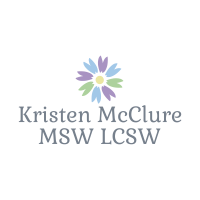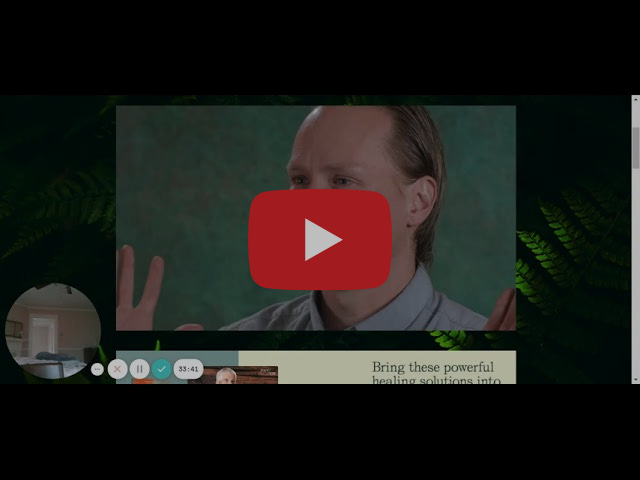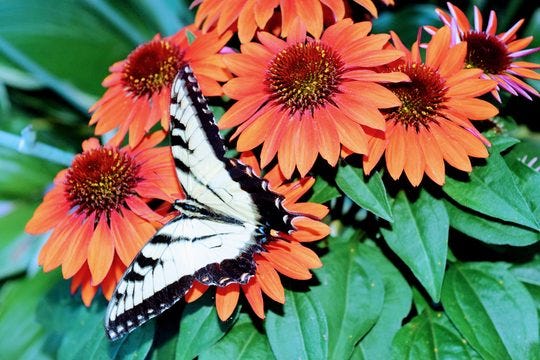The Micro and The Macro.

View this email in your browser

Newsletter Issue 6
June 6, 2021
A Newsletter for The Charlotte Social Worker and Therapist Facebook Group

RESEARCH BRIEFS
Trauma Pain and Polyvagal Theory
New research by the Trauma Stress Research Consortium (TSRC): ‘Cardiac Autonomic Regulation and Joint Hypermobility in Adolescents with Functional Abdominal Pain Disorders’ published in the peer-reviewed Journal of Neurogastroenterology & Motility. The authors used vagal efficiency, a measure informed by Polyvagal Theory, to study autonomic function in adolescents receiving care for abdominal pain. They found that the combination of GI pain and joint hypermobility, a poorly understood connective tissue condition, was associated with the most threat reactive autonomic profiles. (from polyvagal institute)
Resistance in Therapy
Honoring Protective Responses: Reframing Resistance in Therapy Using Polyvagal Theory by Samuel Ryland, Lee N. Johnson and Julia C. Bernards, published in ContemporaryFamily Therapy May 9, 2021. Abstract excerpt: Therapists often conceptualize resistance as client behaviors that impede progress; this perspective threatens the therapeutic alliance, especially in couple and family therapy where increased resistance and multiple alliances are present. Polyvagal theory reframes and normalizes resistant behaviors as preconscious, protective responses emerging from our autonomic nervous system. (from polyvagal institute)
Depressive Symptoms Tied to Rapid Kidney Function Decline
Studies are always finding a relationships between physical health and the mind. (Reuters Health) - Adults with frequent depression symptoms may be more likely to experience rapid kidney function decline, a Chinese study suggests.
Researchers examined data on 4,763 adults 45 years and older with normal kidney function at baseline who participated in three waves of the China Health and Retirement Longitudinal Study, in 2011, 2013, and 2015. All had a mean estimated glomerular filtration rate (eGFR) of at least 60 mL/min/1.73m2 at baseline and had eGFR assessed at baseline and study exit.
These findings are consistent with earlier research linking depressive symptoms to declining kidney function, and offer fresh evidence that this association persists even among relatively healthy individuals, said Willem Kop, a professor at the Center of Research on Psychology in Somatic diseases at Tilburg University in the Netherlands. https://www.medscape.com/viewarticle/952308?src=wnl_edit_tpal&uac=282860EZ&impID=3421029&faf=1 (from medscape)
Movie and 7 Days of Talks: The Wisdom of Trauma
Online world movie premiere for The Wisdom of Trauma, featuring Dr. Gabor Maté, and a 7-day ‘Talks on Trauma’ expert teaching series with LIVE Q&A. This important film highlights how trauma impacts our world and what we can do about it as a society. The movie is broadcast June 8 – 14, 2021. The week includes interviews by Dr. Gabor with some of today’s most well-known thinkers in the field of trauma, including Stephen Porges, Dan Siegel, Thomas Hubl, Peter Levine, Esther Perel, Resmaa Menakem, and others. Drs. Mate and Porges will be speaking live on July 9th at 2:40 pm EST.https://thewisdomoftrauma.com/
Resources I’m Sharing with My Clients: Hormone Tracking
From a Newsletter I read the Lazy Genius citing Do Less by Kate Northrup.
Chapter "okay, let's talk about planning your work around your hormones"
Sharing this with my clients
HORMONES
While I don’t know how true this is, I love the idea of charting your levels of energy and moods and how they are impacted by your hormones on your calendar. Here is what Kate Northrup says:
The week you bleed is like winter. It's a great time to rest and maybe reflect a little.
The week after you bleed is like spring. It's when you likely have more creative energy and new ideas.
The third week is when you ovulate, and it's like summer. You're open to the world, open to people, and probably pretty fun to be around.
The fourth week before your period is like autumn. You're winding down and finishing up projects. Somewhere in there is where you also might grab on to your least helpful patterns in your work, relationships, and kindness to yourself.”
Kendra, the lazy genius says
“I started paying attention to this cycle to see if it really worked. It really worked. My energy matched the cycle exactly, and there are tons of studies that verify its consistency for most women across the board. Maybe going inward looks different for each person, new ideas match our passions and skills, and our negative patterns for sure come out in different ways. But the overall idea is the same. And it has literally changed my life. I have the cycle in my Google calendar so that I can make good decisions for myself that match where I am.”
I’ve taken this information and shared the idea of the calendar with my clients, and finding their exact energy pattern. I know that hormones are ignored by many but crucial for my clients and their moods.I’m encouraging them not only to chart how their weeks are impacted but TO THEN PLAN accordingly.
Poem: Kindness

Videos: Proven Autoimmune Disorders and the Gut.
Still really enjoying this series. I’m recording it. Autoimmune Disorders and the Gut. With a Special Appearance by me in my Pajamas.

Psychology:The Brain Changing Magic of New Experiences
New experiences help us be present, and cause a dopamine rush increasing happiness. Learn more about the psychology of it here!
Psychology: Learn about Metacogntive Strategies for Overthinking
I specialize in anxiety and this is the kind of thing I latched onto like a fanatic when I learned it in my social anxiety expert workshop like three years ago with Larry Cohen. Please read this article to learn about it.
After remembering it, I bought a few more books.
Very good stuff.
https://psyche.co/guides/how-to-stop-overthinking-with-help-from-metacognitive-strategies?utm_source=pocket&utm_medium=email&utm_campaign=pockethits
Practice Issues:Rebranding
I’ve gone through self compassion training level one so I get these alerts on self compassion articles. Check out how this LCSW has rebranded herself as an executive coach for “ sensitive strivers” for the Harvard business review and you can link to her website through the article page “ Stop Being so Hard on Yourself.
Article I Read That I Liked: Loving Kindness
Loving-Kindness: Healing Your Inner Child
BY PEGGY ROWE WARD AND LARRY WARD| MAY 20, 2021
Peggy Rowe Ward and Larry Ward on how to give yourself the love and compassion you deserve. And send some of that love to the wounded child inside you. They need it.
Thich Nhat Hanh, our teacher, described love as an extremely powerful energy that has the capacity to transform ourselves and others. But many of us find it difficult to direct love toward ourselves. We quickly become aware of negative feelings like shame, guilt, and self-criticism that make it hard to love and care for ourselves. Unfortunately, this is all too common.
Luckily for us, the seeds of love, compassion, joy, and equanimity are in our store consciousness, ready and waiting to grow. We can study and practice in such a way that we shrink the seeds of self-aversion, self-criticism, shame, and guilt inside us and grow our hearts as wide as the world. When we are able to practice self-love consistently, returning over and over to maintain a soft heart in the face of our own suffering, eventually we’re able to let go of our negative thought patterns and find ourselves transformed.
Thich Nhat Hanh talked about healing the inner child within each of us as a key way to give ourselves the love and compassion we need. For children to feel a sense of belonging, they need to feel understood and loved. They need the feeling of connectedness that comes when they are seen and held in love. But if our parents, teachers, or society didn’t listen to or respond to our fears, or sent messages that we were not good enough, we may continue these behaviors with ourselves as adults. We may disconnect from and bury parts of our inner life because they are too painful to face.
The inner child may hold memories of abuse, neglect, and other traumas we endured during childhood. Adverse childhood experiences (ACEs) are traumatic events in a child’s life that can have lasting negative effects on our health and well-being.
ACEs may include the following: psychological, emotional, physical, or sexual abuse; violence against their mother; neglect; bullying; or living with household members who were substance abusers, mentally ill, suicidal, criminal, or imprisoned. Such maltreatment causes chronic stress that can disrupt early brain development and the development of the nervous and immune systems. Over time, ACEs can lead to post-traumatic stress, migraines, chronic muscle tension, fatigue, and chronic illnesses such as autoimmune diseases and skin conditions.
These childhood traumas can impact our capacity for self-love as a result of stress trapped in the body. This is one of the reasons that the following meditation begins by strengthening our heart and mind with the somatic sensations of love and peace.
Get even more Buddhist wisdom delivered straight to your inbox! Sign up for Lion’s Roar free email newsletters.
However, it is important to remember that the inner child is not a separate, unchangeable self. It is not a permanent essence or state of being, but rather deep patterns resulting from many causes, conditions, and perceptions that are both individual and collective. While these patterns may arise in any moment, it is our good fortune that there is a natural neuroplasticity of our brain and mind. This plasticity allows for deep healing and transformation illuminating the divine child hidden in the suffering of adversity.
Healing that inner child within us is the first and most important expression of love and kindness toward ourselves. Here are several ways we can practice love for ourselves, heal the wounds within us, and expand our capacity to love other people, because to fully love others we must first love ourselves.
Send Love to Your Five-Year-Old Self
When we experience our own suffering, the first invitation is to name this experience. In Thich Nhat Hanh’s words, “We call it by its true name.”
Whatever arises, you can name it and send it the energy of loving-kindness. You can say, “I am experiencing the energy of shame and self-criticism. I put my arms of love around these feelings.” Although you are not trying to fix or change anything, the practice of holding your suffering in arms of love will help it to shrink and your self-love to grow.
Perhaps you have an experience of being held this way. A few days after Peggy’s first husband, Steve, passed away, a close friend came to the house. Peggy remembers: “I was sitting on the couch. He put his arm solidly and yet loosely around me and held me for at least half an hour. He didn’t fidget, speak, or move. He didn’t squeeze or pat. He just sat with me. He met me where I was. I cried for many minutes and then experienced a great peace. He didn’t want anything from me. He was just there to be with me in my suffering.”
This is the kind of love in which we hold the suffering child within us.
Sometimes, though, you may experience that the suffering child is afraid to appear. Sometimes it seems this child is in a lost place. Sometimes the child does not trust you. This is to be expected. You will have to move slowly. You have observed that with children and animals, you shouldn’t approach them too quickly. The best method is to let them come to you in their own time.
There are several practices from Thich Nhat Hanh’s tradition that have helped each of us build a loving and trusting relationship with the suffering child within us. One practice is to have a family altar. On this altar, Thich Nhat Hanh encouraged us to have photographs of ourselves as young children. This practice helps us build a relationship that honors our inner child.
A Meditation to Heal Your Inner Child
The following meditation has helped us heal from early childhood experiences. We regularly practice this meditation because it provides a kind space for the body, heart, and mind to gently remember. It offers a living space of inclusivity and compassion for childhood memories and all previous experience as we continue to deepen and grow in self-love.
1. Tap Your Resources of Love and Support
Thich Nhat Hanh once spoke about cooking up love. He reminded us of how we can use pieces of straw or paper to start a good fire. Our resources for love are the pieces of straw that help us generate the energy of loving-kindness.
Resources that help us develop self-love include people, places, pets, activities, and beautiful memories that soften our hearts and nourish our gratitude, love, and compassion. In your practice, take a few minutes to recall such a resource deeply. Make it come alive by activating your senses.
One resource we are both grateful for is the wise and compassionate therapists, body healers, and shamans who have supported our journey of transformation and healing. We often tell our friends that a somatic and trauma-informed therapist can be an essential support person for those on a spiritual path.
A resource that opens our hearts is our dog, Charlie. Peggy imagines the weight of his body in her lap and the feel of his fur under her hand. She pictures his jaunty, bouncy walk and smile. When she brings Charlie to mind, she feels her body relax and her face and eyes soften.
When Peggy needs even more support with her practice, she imagines the Pieta in the Vatican, a beautiful statue by Leonardo da Vinci of Mary holding Jesus. She says, “Sometimes Jesus is holding me, but more frequently, I rest myself in the arms of the Mother Mary. Mary helps the mother in me who is learning how to love myself with each breath.”
It is very important to take the time to savor your own resources of love so they are committed to long-term memory. Use all of your senses and anchor these sensations of goodness in your body and mind as you direct the energy of loving-kindness toward yourself.
2. Attend to Your Body
Once we are able to experience the positive sensations of being in touch with our resource, we attend to our body. The first foundation of mindfulness is the body. We love our self by being connected with our body and recognizing the miracle of our body.
Find a place where you can slow down without distraction so that you can be aware of the body and the breath with some degree of comfort. Be thorough in your practice of establishing your posture so that your breath is easeful and you can truly be present.
Scan your body, feet to crown, bringing your mindful attention to your entire body with kindness. Invite your body to relax and soften, settling the body, sinking into your cushion or chair. Thich Nhat Hanh reminds us that this is how we keep our appointment with life. He said, “We stop, we calm, we rest, we heal, and we transform.” Sending this mindful energy of kindness to your body is an act of self-love.
3. Offer Love to Your Inner Child
Then the invitation is to silently offer these words of guided meditation to yourself:
Breathing in, I know that I am breathing in.
Breathing out, I know that I am breathing out
I bring my kind attention to the in-breath
I bring my kind attention to the out-breath.
Breathing in, I am aware of my whole body, right here
Breathing out, I am aware of my whole body, right here
Aware of body, here and now
Breathing in, I see myself as a five-year-old child, fragile and vulnerable.
Breathing out, I smile to myself as a five-year-old child.
Breathing in, I am aware that the five-year-old child is in me.
Breathing out, I hold this child tenderly.
Allow as much time as you would like to experience holding this child that is you. When we first practiced with the little one inside of ourselves, we found it took patience and persistence to connect to the child within. Larry would visualize the child or else he’d visualize a black panther to support his practice. As a kinesthetic learner, Peggy found it helpful to experience the sensation of holding a puppy or kitten. We had to build our relationship and trust by continuing to practice just welcoming this child. Find your own way that helps you to feel solid and at ease.
This meditation has helped us to see ourselves as children and experience the very real vulnerability of human beings. We find that we frequently underestimate our resilience and strength, as well as our fragility and vulnerability. They are not separate. There is great power and strength in our vulnerability and fragility. Being in touch with vulnerability, while it may not be easy at first, is a powerful opportunity to be in touch with life and our own goodness. In doing so, the hidden divine child within can be healed and strengthened.
Larry captures benefits from his practice of honoring the inner child with these lines from a poem he wrote: “I am here now, waking up in the changing room of my soul’s department store. I am becoming what my young self once knew, gazing at stars from the attic window following a yellow and green caterpillar on the sidewalks of Cleveland to new worlds.”
Blessings on your practice of love.
FROM LIONS ROAR At Lion’s Roar, our mission is to communicate Buddhist wisdom in today’s world. The connections we share with you — our readers — are what drive us to fulfill this mission.
Today, we’re asking you to make a further connection with Lion’s Roar. Can you help us with a donation today?
As an independent nonprofit committed to sharing Buddhist wisdom in all its diversity and breadth, Lion’s Roar depends on the support of readers like you. If you have felt the benefit of Buddhist practice and wisdom in your own life, please support our work so that many others can benefit, too.
What’s Unacceptable This Week?
From Feminism for Breakfast
Remains of 215 children were found at a former Indigenous school site in Canada. “For Indigenous peoples across the United States and Canada, the discovery of this mass grave opened anew the deep intergenerational wounds created by the respective boarding/residential school systems implemented in each colonizing nation.”
Not sure what happened? Get up to speed on the basics here. (Reuters) https://www.reuters.com/world/americas/remains-215-children-found-former-indigenous-school-site-canada-2021-05-28/
Want to dive deeper? Check out this in-depth post from the subreddit r/ Ask Historians. In the post citing 18 researched sources, you’ll find “a brief introduction to the industrial/boarding/residential schools, and how similar children navigated their experiences in a deeply oppressive system. The violence enacted on these children was the continuation of a failed conquest that began centuries ago and manifests today with the disproportionate rates of Missing and Murdered Indigenous People, especially women.” (Reddit)
Note, you don’t have to have a Reddit account to view this https://www.reddit.com/r/AskHistorians/comments/np9lez/who_is_this_child_an_indigenous_history_of_the
Mental Health Stigma
Are we still living in the dark ages when it comes to mental health? Apparently. If you aren’t following this news story about Naomi Osaka, check it out here. https://www.nbcnews.com/news/world/naomi-osaka-s-withdrawal-throws-athletes-mental-health-sports-spotlight-n1269300
It’s About Time. Shouldn’t Mental Health Be a Valid Reason To Miss School?
Montgomery County leaders are taking steps to add mental health to the list of valid reasons to be absent from school, saying the move is especially important after the inordinate toll of the pandemic. https://www.washingtonpost.com/local/education/montgomery-county-schools-mental-health/2021/05/26/10410d5c-bdae-11eb-9c90-731aff7d9a0d_story.html?utm_medium=Email&utm_source=ExactTarget&utm_campaign=MindShift%20Newsletter&mc_key=00Qi000001j2MTiEAM
Laws Banning Critical Race Theory
Teachers talk about how they are impact by this ridiculousness.
THIS IS WHATS HAPPENING
“ In Oklahoma City, teacher Telannia Norfar said she and her colleagues at Northwest Classen High School had planned to discuss a schoolwide approach to help students understand current events – including the murder of George Floyd, family separation at the Mexico border, and the use of racist terms such as the "China virus."
"We need to do it, because our students desire it," she said. "But how do we do that without opening Oklahoma City public schools up to a lawsuit?"




MUDITA
I’m happy for you and your happiness
I celebrate you and your joy
I delight in your success, may it continue to grow
May you enjoy success and appreciation

Copyright (C) *|2021|* *|Kristen McClure LCSW|*. All rights reserved.
*|IFNOT:ARCHIVE_PAGE|**|LIST:DESCRIPTION|**|END:IF|*
Our mailing address is:
*|IFNOT:ARCHIVE_PAGE|**|HTML:LIST_ADDRESS_HTML|**|END:IF|*
Want to change how you receive these emails?
You can update your preferences or unsubscribe
*|IF:REWARDS|* *|HTML:REWARDS|* *|END:IF|*



